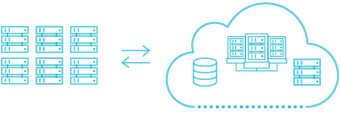Hosting Data Centres, The Impact on IT and End-User Experience (UX)

Authored by Ben Svalbe, Principal Technical Consultant

Ben Svalbe, Principal Technical Consultant, Macquarie Telecom
For companies, making the right decisions at all levels and departments means having access to real, accurate information. These decisions are usually hinged upon the idea of improving the company, whether that means increased revenue or improved services. There is no point in simply changing for change’s sake. The focus remains on customers ultimately. You are only as good as the support around you and customers can be unforgiving, which means it’s necessary to review hosting data centres and the impact on IT and end-user experience (UX).
A critical component of any strong IT methodology is continual improvement around the services provided to users, inside and/or outside of the organisation. Companies also need to have clear metrics to track improved performance and appropriate reviews need to evaluate previous decisions in order to ensure they aim to provide a positive user experience.
Placing the focus on the external end-user (customers).
If a change involves relocating IT or data centre facilities through outsourcing, the worst outcome would be if that decision were to cause the organisation to experience any sort of outage or decline in productivity. IT or facilities downtime can have a negative effect on internal brand identity. The outcome of the change should be for end-users to experience a substantial improvement, therefore demonstrating the competency of the team that made the decision.
During the decision-making process, primary focus should always be placed upon the end-user experience and the company’s ability to provide a sound, reliable service. A company’s biggest critics are the users or customers of its systems, whether they are sitting internally within the organisation or externally as a client visiting a website to make a purchase.
Your technology is a direct representation of your company’s ability to execute.
On the other side of the end-user experience lies your business’s peace of mind regarding intellectual property. Robust online and physical security is critical to protecting intellectual property and customer information. Businesses must have extensive understanding of policies and governance frameworks for proper information handling. Because Macquarie Telecom is owned and run in Australia, we are one of the few data centres exempt from the requirements set forth in the USA Patriot Act. This means that our data centres in Australia are legally protected from other countries seizing the assets and viewing the details.
Security and seamless customer engagement are at the forefront of Macquarie Telecom’s services.
As with any industry, clients have drastically varying levels of understanding of IT requirements. Some companies are more grassroots in their focus, only requiring functional infrastructure. Others have highly detailed security policies that need to be considered at every turn. In between there is a large spectrum of needs. For any maturing organisation, bringing the security profile up to best practices is a key service offered by Macquarie Telecom. We are supplementing the skills and knowledge of your internal team to ensure mutual continued success in providing a sound IT solution for your business.
To learn how Macquarie Telecom can help your organisation make the right decisions, reach out for more information by contacting us. The chat has an attendant that will take your queries and get you in contact with our account or new business teams.

